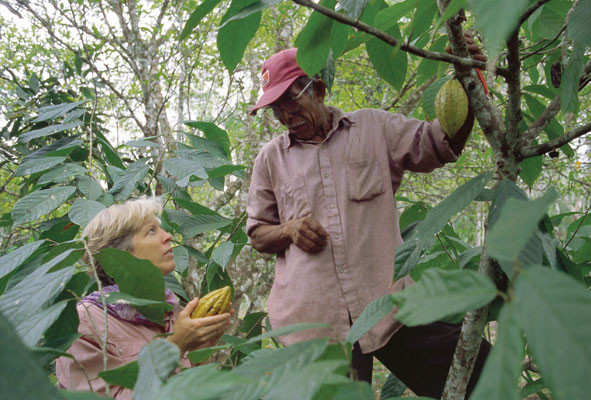
This Article From Issue
September-October 2024
Volume 112, Number 5
Page 258
Getting out into the field and collecting data in person can be an exciting part of doing science—in some disciplines, it might even be considered a rite of passage. Fieldwork can be exhilarating, but it also requires dedication, patience, and care to establish a reliable dataset. In some cases, working in the field can be tedious, taking years to yield results. It can also be uncomfortable, subjecting oneself to the elements. But without fieldwork, many areas of science would not advance.
Archaeologist Anabel Ford has shown particular dedication to working at field sites in Central America to uncover the daily lives of the ancient Maya. In “The Enduring Forest Gardens of the Ancient Maya," Ford describes her decades of working in collaboration with the contemporary descendants of this ancient civilization (as shown below) to understand their unique approaches to forest gardening. In the process of doing so, she has overturned assumptions about how the ancient Maya lived and why their society collapsed.

Courtesy of Anabel Ford.
At the next two field sites featured in articles in this issue, we take a look at our watery planet from two disparate depths—the deep ocean and the shallow shoreline.
In “Mud Acoustics," Charles W. Holland, Stan E. Dosso, and Jason D. Chaytor describe the use of sound waves to image the ocean, which is a poor transmitter of other sensing modalities, such as light or radio waves. But sound waves will also interact with the ocean floor, which is obviously quite muddy. Understanding how mud might reflect, absorb, or change acoustic waves therefore becomes central to creating an accurate image of the Earth’s oceans. Field work to record acoustic data and to collect sediment core samples for further laboratory testing are both required for this endeavor.
Looking at the ocean from the coast, Michael J. Kennish describes how Superstorm Sandy in 2012 changed his life when he saw the devastation the storm had inflicted on the field site he had been studying since 1973. Houses took the most obvious brunt of the damage, but Kennish saw major alterations of components of the ecosystem, which are still under ongoing restoration today. In “Estuaries Face a Stormy Future," Kennish and his coauthors, Hans W. Paerl, Joseph R. Crosswell, and Kenneth A. Moore, take a detailed look at the ways in which more frequent extreme weather events, continued global warming, and sea level rise could have particular damaging effects on the ecology of the Earth’s varied coastlines.
Have you had the opportunity to work out in the field? What kinds of results did your data yield that you couldn’t have found otherwise? Join us on social media or write us a message through our website to tell us about it.

American Scientist Comments and Discussion
To discuss our articles or comment on them, please share them and tag American Scientist on social media platforms. Here are links to our profiles on Twitter, Facebook, and LinkedIn.
If we re-share your post, we will moderate comments/discussion following our comments policy.